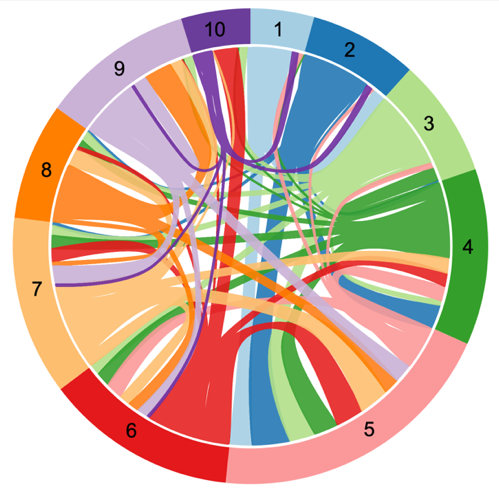Interaktive Lern- und Übungsaufgaben in der Physiklehramtsausbildung
Vergleich zwischen Online-, Präsenz- und Selbststudium
DOI:
https://doi.org/10.25369/ll.v2i2.53Abstract
Lernen ist ein aktiver und konstruktiver Prozess. Interaktive Aufgaben erlauben eine Aktivierung der Lernenden in jedem Lehrformat. Offen ist die Frage, ob es Unterschiede im Bearbeitungserfolg und der Änderung des Professionswissens beim Lernen mit interaktiven Aufgaben unter verschiedenen Lehrformaten gibt. Ebenso ist offen, inwieweit sich angehende Lehrkräfte vorstellen können, mit Hilfe eines Tools solche Aufgaben selbst zu erstellen und in ihrem späteren Berufsleben als Lehrmittel einzusetzen.
Ein interaktives Aufgabenset wurde mittels drei verschiedener Methoden gelehrt und evaluiert. Die Stichprobe (N=66) stellten Lehramtsstudierende der Physik. Sie bearbeiteten einen Lernpfad mit interaktiven Aufgaben, um sich fachdidaktisches Wissen zu einem Thema zu erarbeiten und zugleich ein Tool für die Entwicklung solcher Aufgaben kennen zu lernen.
Die Ergebnisse zeigten keine signifikanten Unterschiede im Bearbeitungserfolg und Professionswissen zwischen der Online- und Präsenzlehre. Jedoch zeigten die im Selbststudium Lernenden signifikant kürzere Bearbeitungszeiten, ein chaotischeres Lernverhalten, einen geringeren Bearbeitungserfolg und geringere Zuwächse im Professionswissen. Die Akzeptanz der Studierenden in Bezug auf interaktive Aufgaben und das exemplarische Tool stieg durch die Arbeit mit dem Aufgabenset in allen Gruppen an.
Downloads
Literaturhinweise
Kenner, A. (2022). Shift from technics to didactics - Lehren in Zeiten von Corona. Eine qualitative Untersuchung unter Hochschullehrenden. In U. Fahr, A. Kenner, H. Angenent, & A. Eßer-Lüghausen (Hrsg.), Hochschullehre erforschen, Diversität und Bildung im digitalen Zeitalter (S. 409-427), Wiesbaden: Springer.
https://doi.org/10.1007/978-3-658-34185-5_22
Watzka, B., Richtberg, S., Schweinberger, M., & Girwidz, R. (2019). Interaktives Üben mit H5P. Naturwissenschaften im Unterricht - Physik 30 (173), 22-27.
Santos, D. R., Cordon, C. R., & Palomo-Duarte, M. (2019). Extending H5P Branching Scenario with 360 scenes and xAPI capabilities: A case study in a local networks course. In 2019 International Symposium on Computers in Education (SIIE) (pp. 1-6). IEEE. https://ieeexplore.ieee.org/stamp/stamp.jsp?arnumber=8970117
https://doi.org/10.1109/SIIE48397.2019.8970117
Torrance, M. & Houck, R. (2017). Making Sense of xAPI, TD AT Work Guide, ASTD Press.
Bonwell, C. C., & Eison, J. A. (1991). Active learning: Creating excitement in the classroom. Washington: The George Washington University, School of Education and Human Development. https://files.eric.ed.gov/fulltext/ED336049.pdf
Prince, M. (2004). Does Active Learning Work? A Review of the Research, Journal of Engineering Education, 93(3), 223-231. https://onlinelibrary.wiley.com/doi/10.1002/j.2168-9830.2004.tb00809.x
https://doi.org/10.1002/j.2168-9830.2004.tb00809.x
Hake, R. (1998). Interactive-Engagement vs. Traditional Methods: A Six-Thousand-Student Survey of Mechanics Test Data for Introductory Physics Courses, American Journal of Physics, 66(1), 64. https://aapt.scitation.org/doi/10.1119/1.18809
https://doi.org/10.1119/1.18809
Pereira, D. S., Valdeni, J., Tarouco, L. M. R., Jardim, R. R., Rocha, P.S., & Santos, F. (2019). HTML5 Authoring Tool to Support the Teaching-Learning Process: A Case Study with H5P Framework. International Journal for Innovation Education and Research, 7(2), 92-103. https://scholarsjournal.net/index.php/ijier/article/view/1325
https://doi.org/10.31686/ijier.vol7.iss2.1325
Chen, L., Manwaring, P., Zakaria, G., Wilkie, S., & Loton, D. (2021). Implementing H5P online interactive Activities at scale, ASCILITE 2021, 81-92. https://2021conference.ascilite.org/wp-content/uploads/2021/11/ASCILITE-2021-Proceedings-Chen-Zalaroa-Wilkie.pdf
https://doi.org/10.14742/ascilite2021.0112
Rama Devi, S., Subetha, T., Aruna Rao, S.L., & Morampudi, M.K. (2022). Enhanced Learning Outcomes by Interactive Video Content-H5P in Moodle LMS. In: V. Suma, Z. Baig, S. Kolandapalayam Shanmugam, & P. Lorenz (Eds), Inventive Systems and Control. Lecture Notes in Networks and Systems, vol 436. Singapore: Springer. https://link.springer.com/chapter/10.1007/978-981-19-1012-8_13
https://doi.org/10.1007/978-981-19-1012-8_13
Unsworth, A. J., & Posner, M. G. (2022). Case Study: Using H5P to design and deliver interactive laboratory practicals. Essays in Biochemistry, 66(1), 19-27. https://pubmed.ncbi.nlm.nih.gov/35237795/
https://doi.org/10.1042/EBC20210057
López, S. R. R., Ramírez, M. T. G., & Rodríguez, I. S. R. (2021). Evaluation of the implementation of a learning object developed with h5p technology. Vivat Academia, 24(154), 1-23. https://www.proquest.com/docview/2509034841?pq-origsite=gscholar&fromopenview=true
Sinnayah, P., Salcedo, A., & Rekhari, S. (2021). Reimagining physiology education with interactive content developed in H5P. Advances in Physiology Education, 45(1), 71-76. https://journals.physiology.org/doi/full/10.1152/advan.00021.2020
https://doi.org/10.1152/advan.00021.2020
Wilkie, S., Zakaria, G., McDonald, T., & Borland, R. (2018). Considerations for designing H5P online interactive activities. Open Oceans: Learning without borders. Proceedings ASCILITE, 543-549.
Wicaksono, Setiarini, Novawan, & Ikeda (2021). The Use of H5P in Teaching English, Advances in Social Science, Education and Humanities Research, 514, 227-230. https://www.atlantis-press.com/proceedings/icoship-20/125950249
https://doi.org/10.2991/assehr.k.210101.049
MacFarlane, L.-A. & Ballantyne, E. (2018). Bringing videos to life with H5P: Expanding experiential learning online, Proceedings of the 2018 Atlantic Universities' Teaching Showcase, 22, 28-33. https://ojs.library.dal.ca/auts/article/view/10186
Mir, K., Iqbal, M. Z., & Shams, J. A. (2021). Investigation of Students' Satisfaction about H5P Interactive Video on MOODLE for Online Learning, International Journal of Distance Education and E- Learning, 7(1), 71-82. http://irigs.iiu.edu.pk:64447/ojs/index.php/IJDEEL/article/view/2228
https://doi.org/10.36261/ijdeel.v7i1.2228
Thurner, S., Schön, S., Schirmbrand, L., Tatschl, M., Teschl, T., Leitner, P., & Ebner, M. (2022). An exploratory mixed-method study on H5P videos and video related activities in a MOOC environment, International Journal of Technology-Enhanced Education, 1(1), 1-18. https://www.igi-global.com/article/an-exploratory-mixed-method-study-on-h5p-videos-and-video-related-activities-in-a-mooc-environment/304388
https://doi.org/10.4018/IJTEE.304388
Santos, D. R., Cordon, C. R., & Palomo-Duarte, M. (2019). Extending H5P Branching Scenario with 360º scenes and xAPI capabilities: a case study in a local networks course, 2019 International Symposium on Computers in Education (SIIE), 1-6. https://ieeexplore.ieee.org/document/8970117
https://doi.org/10.1109/SIIE48397.2019.8970117
Roth, J. (2015). Lernpfade - Definition, Gestaltungskriterien und Unterrichtseinsatz. In J. Roth, E. Süss-Stepancik & H. Wiesner (Hrsg.), Medienvielfalt im Mathematikunterricht. Lernpfade als Weg zum Ziel (S. 3-25). Wiesbaden, Springer Spektrum.
https://doi.org/10.1007/978-3-658-06449-5_1
Pöhler, B. (2018). Konzeptuelle und lexikalische Lernpfade und Lernwege zu Prozenten. Wiesbaden: Springer Spektrum.
https://doi.org/10.1007/978-3-658-21375-6
Mayer, P., Watzka, B., & Girwidz, R. (2021). Fortbildung zur Steigerung des Akzeptanzverhaltens gegenüber Multimediaanwendungen im Physikunterricht, PhyDid A 1/20, 26-39. http://www.phydid.de/index.php/phydid/article/view/1095
Hattie, J. (2013). Lernen sichtbar machen. Baltmannsweiler.


